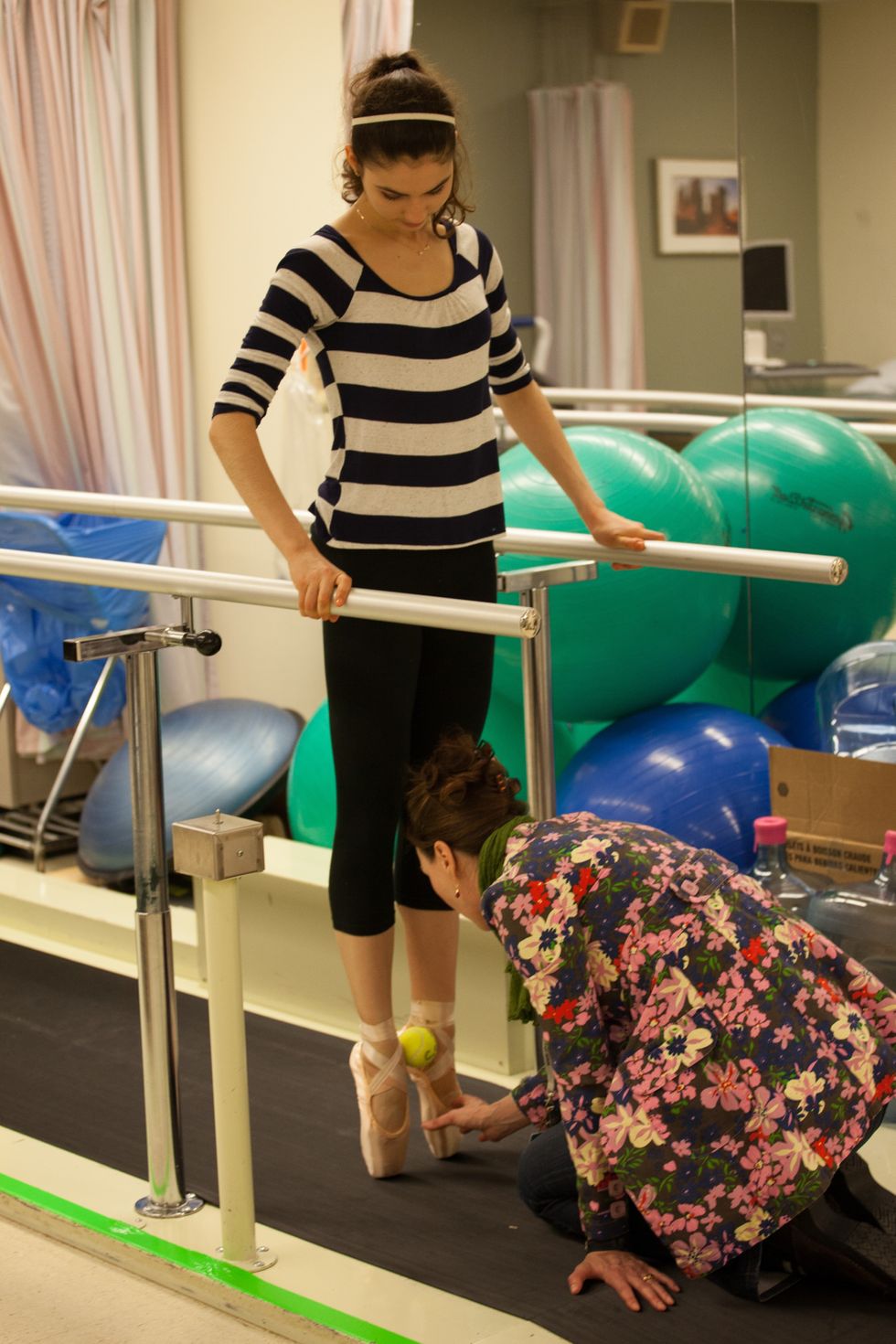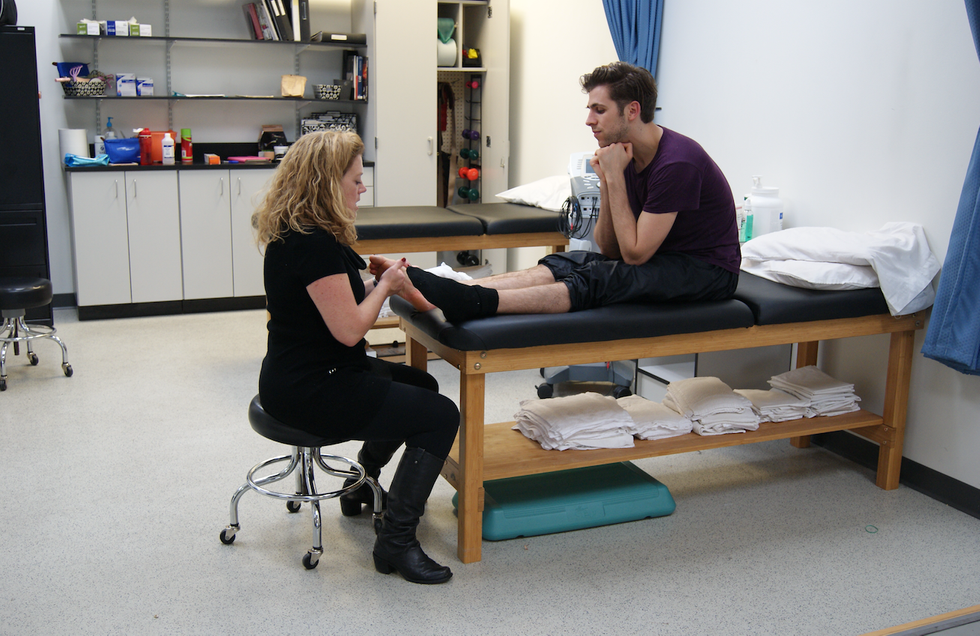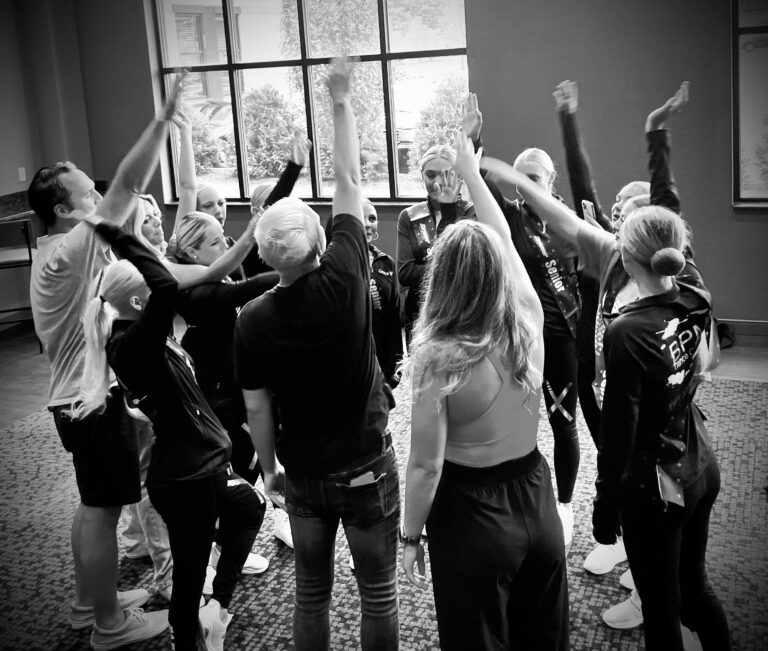
While many dancers spend hours stretching, a lucky few are endowed with nearly limitless flexibility. Stretchiness is prized in the dance world, so that could seem like a huge advantage. But is more always better?
“As dance has progressed, dancers are increasingly being asked to work at their end ranges of joint motion with really high arabesques or développés,” says Nancy Kadel, orthopedic surgeon and co-chair of the Dance/USA Task Force on Dancer Health. But, she warns: “When someone has hypermobility, there is more play in the joint, which may increase the risk of injury.”
Being hypermobile may help you create beautiful lines and shapes, but it can have serious consequences if not managed properly.
When More Flexibility Isn’t Necessarily Better
There are different kinds of flexibility, says Heather Southwick, director of physical therapy for the Boston Ballet. “Some dancers are flexible, but that doesn’t mean they are hypermobile,” she explains. “There is a difference between muscle flexibility and what’s happening at the joint.” If someone has hypermobility, the ligaments holding the bones together at a joint are loose, allowing for more movement beyond the normal range of motion. This can lead to wear and tear, or even dislocations of the joint. So, although the ligaments are more mobile, they are also more fragile.
Sometimes it’s a sign of benign joint hypermobility, an inherited condition involving joint laxity along with pain, fatigue, a tendency to bruise easily and even digestive problems or hernias. In rare cases, it signals a disorder such as Ehlers-Danlos syndrome, in which extreme flexibility can accompany problems affecting the eyes, skin, blood vessels and heart.
Of course, being overly flexible doesn’t always cause symptoms, but regardless, dancers need to balance their innate flexibility with strength and control.

Kadel, kneeling, recommends strengthening exercises to combat hypermobility. Photo by Aaron Burnell, courtesy of Kadel.
Be Aware of the Dangers
The drawbacks of extreme flexibility can include fatigue, pain, sprains and chronic injuries. Some dancers experience the condition only in certain places. But even one unstable joint, like a knee, can be a weak link in a chain reaction pulling other joints out of line.
Annette Karim, director of dance medicine at Evergreen Physical Therapy Specialists, says she sees a lot of dancers with problems affecting the hips. Examples include labral tears—when the cartilage ring lining the hip joint socket separates from the joint—and impingement, in which the bones of the hip joint rub against each other, causing pain and joint inflammation. Dancers may hear a clicking sound or feel pain in the hip when they développé to the front or side, but should see a dance physical therapist before jumping to any conclusions.
An overly mobile spine is also vulnerable to injury. “L-4 can slide in front of L-5 during back cambrés, battements or arabesque,” says Karim, which may cause a vertebral fracture in extreme cases. Over the long term, spine osteo-arthritis may develop, leading to chronic back pain and stiffness with age.

Southwick working with Boston Ballet dancer Alec Roberts. Photo by Lauren Pajer, courtesy of Boston Ballet.
Managing the Condition
You cannot reduce hypermobility, but you can manage it. “Dancers really have to work to stabilize and protect the joints,” says Kadel. As with all dancers, stability begins with a strong center. Pilates is a good option for building core strength.
Southwick gives dancers strengthening exercises that engage and activate the core and deep muscles. “All athletes and dancers tend to use their global muscles, and it’s hard to find the deep muscles,” she says. If you’re not strong enough to perform a développé, for instance, the bigger muscles like the quads take over.
Isometric exercises, where the muscle contracts without changing length (like pushing against a wall), are also important for creating strength, says Karim. “A dancer can still go to their end range, but they need to be strong,” she says. “You have to be stable in the whole range.”
Dance teachers should be aware that strengthening exercises given in class may not be enough. Dancers may need to do additional strengthening on their own or with a physical therapist. And, while it’s still important to stretch, hypermobile dancers should be mindful to stretch just the muscle itself, not the joint or ligaments.
It’s worth seeing a physical therapist who works with hypermobile dancers. Physical therapists often use an initial test of flexibility and may refer the dancer to a physician if there is concern.
Hypermobile dancers should come to terms with their bodies, says Southwick. “The key is to make sure students know how to control it.” She cautions against oversplits, in particular. Kadel likes to remind dancers to balance flexibility with stability and control: “With great mobility comes great responsibility.”



